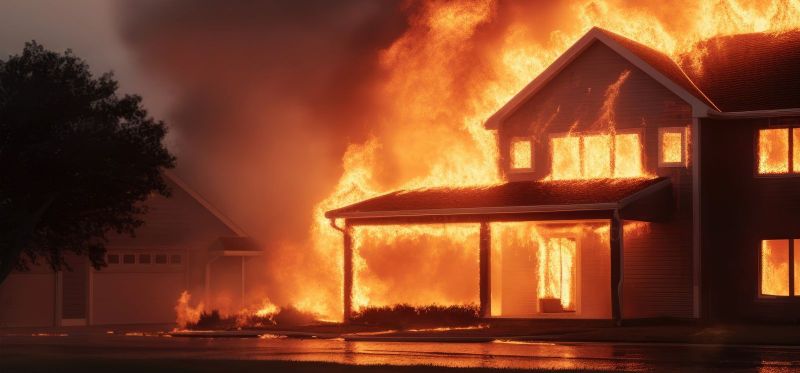A fire outbreak is a devastating event that can disrupt lives, shatter homes, and leave lasting emotional scars. Beyond the physical destruction, the journey toward recovery from fire damage is a challenging yet transformative process. It involves more than restoring structures; it’s about rebuilding lives, fostering resilience, and finding hope amid adversity. Here, we explore the essential steps and crucial aspects of fire damage recovery that contribute to rebuilding lives, step by step.
Immediate Response and Safety Measures
- Safety First: Ensuring the safety of occupants is the immediate concern. Evacuation and ensuring no lingering fire hazards are vital in the aftermath of a fire.
- Professional Assessment: Calling in restoration professionals for an immediate assessment of the property helps identify safety risks and the extent of damage.
- Securing the Property: Securing the property against further damage or potential looting by boarding up or temporary fencing is crucial.
Emotional Support and Guidance
- Trauma Counseling: Addressing the emotional trauma experienced by individuals affected by the fire through counseling and support services.
- Communicating with Compassion: Restoration professionals offering clear and empathetic communication provide reassurance and guidance to affected individuals.
- Community Resources: Connecting individuals with community support networks and resources helps in coping with the emotional aftermath.
Insurance and Documentation
- Filing Insurance Claims: Assisting property owners in understanding insurance coverage and filing claims for fire damage restoration.
- Documenting Damages: Comprehensive documentation of damages through photographs or videos helps streamline the insurance claims process.
- Understanding Policy Coverage: Clarifying policy coverage and limitations to ensure accurate expectations during the restoration process.
Comprehensive Damage Assessment
- Thorough Inspection: Restoration experts conduct a detailed assessment to identify structural damage, smoke, soot residues, and water damage.
- Developing a Restoration Plan: A tailored restoration plan is formulated, outlining the steps and timeline for the recovery process.
- Prioritizing Restoration Needs: Focusing on immediate needs like structural stabilization, water damage mitigation, and smoke odor removal.
Cleaning and Restoration Process
- Smoke and Soot Cleanup: Thorough cleaning and removal of smoke and soot residue from affected surfaces, furniture, and belongings.
- Water Damage Mitigation: Addressing water damage caused by firefighting efforts by drying and dehumidifying affected areas.
- Content Restoration: Salvaging and restoring personal belongings and sentimental items wherever possible.
Structural Repairs and Reconstruction
- Structural Stability Restoration: Repairs and reconstruction to restore the structural integrity of the property, including roofs, walls, and flooring.
- Electrical and HVAC Systems: Ensuring proper inspection, repair, or replacement of damaged electrical and HVAC systems for safety.
- Interior Reconstruction: Rebuilding interiors with a focus on quality materials and craftsmanship, aiming for both functionality and aesthetics.
Environmental Considerations and Safety Checks
- Mold Prevention: Implementing measures to prevent mold growth in areas affected by moisture from firefighting efforts.
- Air Quality Assessment: Conducting air quality tests to ensure the restoration area is free from harmful contaminants.
- Final Safety Checks: Verifying that all safety measures are in place, including functional fire alarms and fire extinguishers.
Rebuilding and Moving Forward
- Creating a Fresh Start: The restoration process signifies a new beginning, allowing individuals to envision and create a refreshed living space.
- Community Support: Engaging with the community and neighbors fosters a sense of belonging and support during the rebuilding phase.
- Hope and Resilience: The journey of recovery instills resilience, hope, and the strength to overcome challenges and rebuild lives anew.
The journey of fire damage recovery is a multifaceted process that encompasses physical restoration, emotional healing, and rebuilding lives. Each step—from the initial response to rebuilding structures and lives—plays a vital role in guiding individuals and communities toward recovery. The journey, though arduous, is a testament to resilience, determination, and the human spirit’s ability to rise from adversity, one step at a time.

